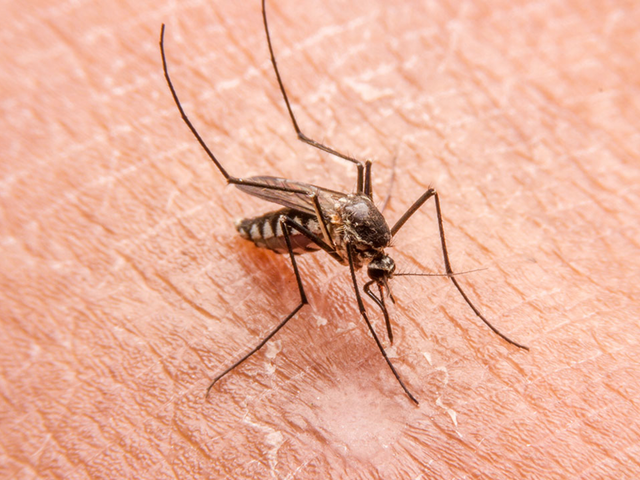
By 2026, one in five essential medicines in the U.S. and Europe could be unavailable for more than 30 days at a time. That’s not a worst-case scenario-it’s what leading health agencies are already preparing for. The problem isn’t just bad luck or a single factory shutdown. It’s a perfect storm of aging supply chains, geopolitical shifts, and shrinking manufacturing capacity-all accelerating right now. And if you’re relying on insulin, antibiotics, or even blood pressure pills, you’re not just a patient. You’re on the front line of a growing crisis.
Why Drug Shortages Are Getting Worse
Drug shortages used to be rare. In 2005, there were fewer than 100 reported shortages in the U.S. By 2024, that number jumped to over 350. And it’s not slowing down. The World Health Organization now lists 42 essential medicines as being in critical supply risk globally. Why? Because the system was built for stability, not disruption.
Most generic drugs-about 90% of all prescriptions-are made in just two countries: India and China. These manufacturers operate on razor-thin margins. When raw materials spike in price, when a factory fails an FDA inspection, or when trade tariffs hit, production stops. And there’s no backup. Unlike car parts or electronics, you can’t just switch to another supplier overnight. The FDA has to approve every batch, every facility, every ingredient. That process takes 18 to 24 months. By the time a new supplier is ready, the shortage is already six months deep.
Take the case of doxycycline, a common antibiotic used for everything from acne to Lyme disease. In 2023, a single Chinese supplier halted production due to environmental violations. The U.S. had no alternative manufacturer lined up. Within three months, prices tripled. Hospitals rationed doses. Emergency rooms delayed treatments. This isn’t an exception-it’s the new normal.
The Hidden Drivers Behind the Scarcity
Three big forces are pushing drug shortages into crisis mode: climate, politics, and economics.
First, climate change. India’s monsoon season is becoming more erratic. Floods wipe out raw material farms. Droughts dry up water needed for drug synthesis. In 2024, a heatwave in Gujarat shut down seven API (active pharmaceutical ingredient) plants for over a month. The result? A global shortage of metformin, the most common diabetes drug. Patients in Australia, Canada, and the U.S. were forced onto more expensive alternatives-or went without.
Second, geopolitics. The U.S. and EU are trying to reduce dependence on Chinese and Indian suppliers. That sounds smart-until you realize no one else can fill the gap. Vietnam and Mexico are trying to build capacity, but they’re years behind. Meanwhile, China has started restricting exports of key chemicals to countries it sees as hostile. In 2025, China halted shipments of enoxaparin, a blood thinner, to the U.S. for six weeks. No warning. No explanation. Just silence.
Third, economics. Generic drug makers barely make a profit. A single tablet of lisinopril, a blood pressure medication, costs less than 2 cents to produce. But the price you pay at the pharmacy? Often $4. That’s not enough to invest in new equipment, hire more inspectors, or build redundancy. Companies cut corners. They delay maintenance. They run factories 24/7 until something breaks. And when it does, there’s no spare part.
How Forecasting Is Changing
Five years ago, hospitals tracked shortages with spreadsheets and phone calls. Today, they’re using AI models that pull data from 17 different sources: FDA alerts, shipping logs, raw material prices, factory inspection reports, even satellite images of chemical plant activity.
The U.S. Department of Health and Human Services now runs a real-time shortage dashboard that predicts supply gaps up to 12 months ahead. It uses machine learning to spot patterns-like when a supplier in Hyderabad increases its export tariffs, or when a Brazilian soy farm (used to make corticosteroids) reports lower yields due to soil erosion.
Pharmacies in Sydney and Toronto are testing predictive algorithms that flag which drugs will run out next. One pilot program in New South Wales reduced insulin shortages by 63% in six months by automatically triggering orders before stock hit critical levels. That’s not magic. It’s data.
But here’s the catch: these tools only work if you have clean, timely data. And right now, half the world’s drug manufacturers still report shortages manually-via email or fax. That’s like trying to navigate a highway with paper maps.

Who Gets Left Behind
Drug shortages don’t hit everyone equally. Wealthy countries can pay more, import from alternate sources, or switch to brand-name drugs. But in low-income nations, the impact is brutal.
In Nigeria, a shortage of chloroquine in 2024 meant malaria treatment became unavailable for over 200,000 children. In Ukraine, war disrupted supply routes for chemotherapy drugs. In rural Australia, patients on dialysis faced delays because the heparin they needed was stuck in a port strike in Shanghai.
Even in wealthy nations, marginalized communities suffer most. A 2025 study in the Journal of the American Medical Association found that Black and Latino patients in the U.S. were 40% more likely to experience treatment delays during drug shortages. Why? They’re more likely to rely on public hospitals, which get the leftovers after private clinics have stocked up.
And it’s not just about pills. It’s about dignity. When you can’t get your thyroid medication, you feel tired all the time. When you can’t get your antidepressant, you stop sleeping. When you can’t get your insulin, you’re scared to leave the house. These aren’t abstract risks. They’re daily realities.
What’s Being Done-and What’s Not
Some governments are trying. The U.S. passed the Drug Supply Chain Security Act in 2013, requiring digital tracking of drugs from factory to pharmacy. But enforcement is weak. Only 38% of manufacturers fully comply. The EU has a similar law, but it doesn’t cover generics.
Australia launched a National Medicine Shortage Response Team in 2024. They’ve started stockpiling 12 critical drugs, including epinephrine and morphine. But they’re only storing enough for 45 days. That’s not enough for a prolonged crisis.
Meanwhile, the FDA is finally pushing for more domestic production. In 2025, they approved $1.2 billion in grants to build new API plants in Ohio and Tennessee. But these projects take three to five years to complete. We’re planning for 2028 while the crisis hits in 2026.
Big pharma? They’re focused on new, expensive drugs-cancer therapies, weight-loss injectables, gene treatments. Generics? They’re seen as a commodity. And commodities don’t get R&D budgets.

What You Can Do Right Now
You can’t fix the system overnight. But you can protect yourself.
- Ask for alternatives. If your pharmacy says your drug is out of stock, ask: "Is there another brand or generic version that works the same?" Many are interchangeable.
- Keep a 30-day backup. If you take a daily medication, ask your doctor for a 90-day prescription. Some insurers allow it for chronic conditions.
- Sign up for alerts. The FDA’s Drug Shortages page and Australia’s TGA website send out real-time updates. Bookmark them.
- Don’t hoard. Buying extra pills doesn’t help. It makes shortages worse. Stockpiling creates artificial demand and drives up prices for everyone.
- Speak up. If you’ve been affected by a shortage, report it to your local health department. Public pressure drives policy change.
The Road Ahead
By 2030, the global market for drug shortage forecasting tools will be worth over $2 billion. That’s because companies are finally realizing: predicting scarcity isn’t just smart-it’s survival.
But technology alone won’t fix this. We need policy. We need investment. We need to stop treating life-saving medicines like cheap electronics.
The truth is, we’ve known about this for years. The warnings came from the WHO, the CDC, the IMF. But no one acted until patients started dying.
It’s not too late to change course. But we’re running out of time-and out of pills.
11 Comments
Write a comment
More Articles

How to treat skin irritations caused by insect bites and stings.
In my recent blog post, I've detailed some effective ways to treat skin irritations caused by insect bites and stings. I've included some home remedies like using a cold compress and applying a mix of baking soda and water to the affected area. I also discussed when to seek medical attention, especially if you're showing signs of an allergic reaction. Additionally, I emphasized the importance of not scratching the irritated area to prevent infection. Lastly, I mentioned some preventative measures to avoid insect bites in the first place.



Sameer Tawde
November 17, 2025 AT 18:10India makes half the world’s generics, and yeah, we’re not perfect-but blaming us for everything is lazy. We’re the backbone of affordable medicine, and now you want to cut us off? We’re building better labs, training more chemists, and yes-we’re listening. Let’s fix this together, not point fingers.